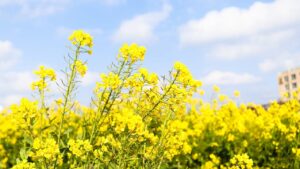While there is a steadily increasing global demand for grains that is predicted to double by 2050, crop grain yields are struggling to meet this demand due to climate change.
The University of Western Australia’s Institute of Agriculture plant breeding researchers and the University of New England (UNE) animal breeding researchers are addressing this issue with a newly developed crop breeding method. The method achieved extremely high rates of genetic gain for canola in Australia and Canada, according to a release.
The research, which was recently published in Plants, was funded by Norddeutsche Pflanzenzucht Hans-Georg Lembke KG (NPZ) under the company’s canola pre-breeding research agreement with UWA. Wallace Cowling, professor and UWA project leader, shared that the research identified an innovative method to breed annual grain crops.
“Our method resulted in a genetic gain in grain yield of up to 4.3 per cent per annum in our global spring canola breeding program since 2016,” he said.
Researchers also elevated canola seed oil and protein, while massively enhancing the crop’s resistance to blackleg (Phoma) disease. The latest animal breeding technology founded on optimal contributions selection was utilized by researchers as they combined rapid cycles of genetic selection for canola.
“We developed MateSel software to help animal, tree and crop breeders to optimise the multiple competing objectives of their breeding programs,” shared Brian Kinghorn, UNE emeritus professor. “MateSel in this project was used to optimise decisions to achieve world-leading rates of genetic gain in grain yield and other economic traits in Australia and Canada.”
The recent publication was founded on 10 years of research, according to Cowling.
“We asked our partners NPZ in Europe and DL Seeds in Canada to send their latest canola varieties for intercrossing in 2012,” he said. “Every two years we crossed the best offspring and field-tested the progeny in Australia and Canada. We are excited that we achieved very high rates of genetic gain in grain yield, but we also show genetic gains are stable across a diverse range of environments.”
The breeding of crops for varying environments and markets across the globe in a sole program utilizing ‘multiple end-uses’ in MateSel is one future possibility researchers discussed in the paper.
“This is how technological transformation occurs — through the sharing of ideas and technology among researchers at the forefront of their careers in different fields,” continued Cowling. “We are fortunate to have great collaboration between UWA and UNE researchers on this project, and the support of international canola breeding industry partner NPZ.”












